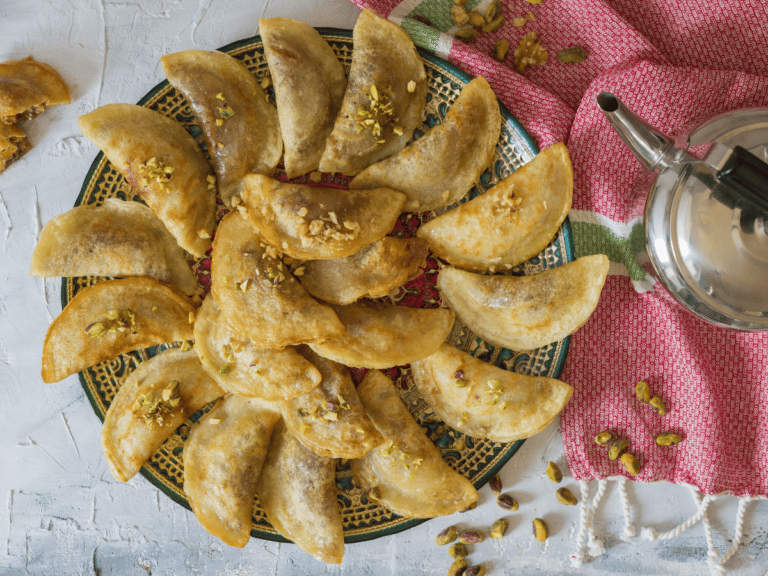
You might know Shavuot as the holiday of cheesecake (there are a number of reasons for the custom of eating dairy) but Shavuot foods are a lot more diverse than either “New York style” or “chocolate.”
Pan de siete cielos or “bread of the seven heavens”
For 780 years, el pan de siete cielos or “the bread of the seven heavens” was the signature Shavuot dish for Sephardic Jews. The bread dates back to the Iberian Peninsula (Spain and Portugal) during the eighth century.
In the Greek city of Thessaloniki Jews baked this bread all the way up until World War II, when the community was almost entirely exterminated by the Nazis. Today, only a handful of survivors can recall eating the bread at their holiday tables and the tradition has all but perished.
El pan de siete cielos features intricate shapes, designs, and braids that represent Mount Sinai, Miriam’s Well and Jacob’s Ladder. The dough is filled with butter, milk, and sugar – kind of like a flatter sweet challah.
Blintzes
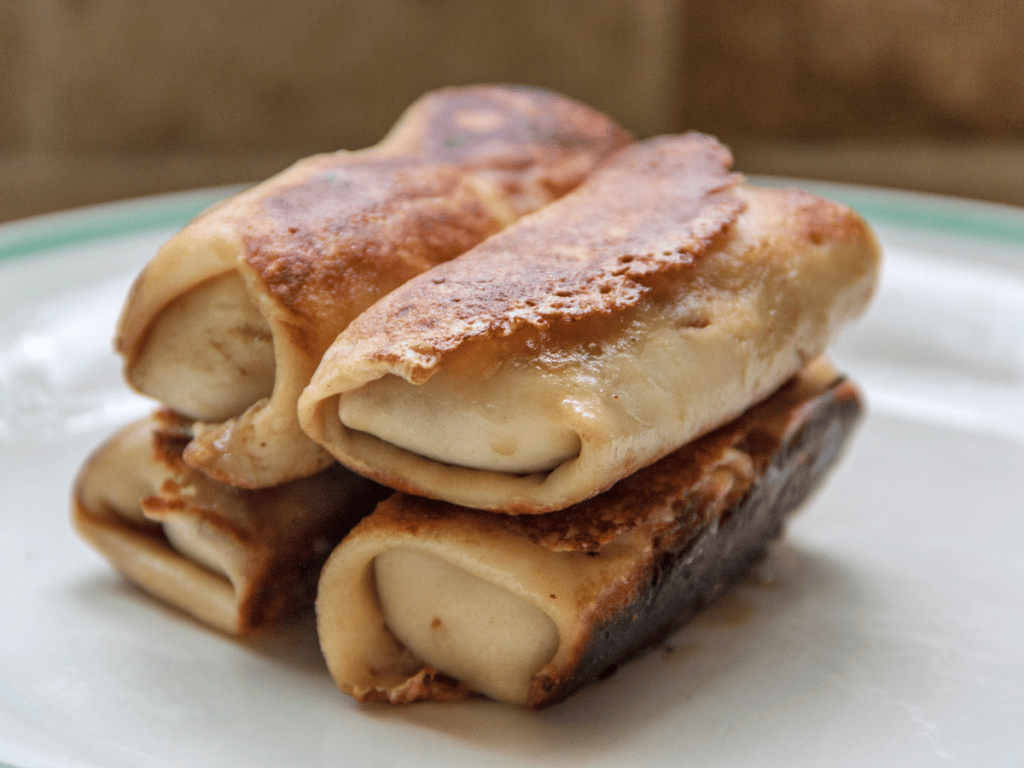
In Ashkenazi homes, blintzes are a Shavuot staple. Blintzes are sweet, thin, pancakes rolled up and filled with soft cheese – you could call it a Jewish crepe. Blintzes are of Hungarian origin— filled pancakes, called “palacsinta,” are a common Hungarian dish.
Blintzes are often fried in butter and topped with jam or sour cream. One of the reasons that blintzes are a beloved Shavuot food is that two blintzes laid side-by-side resemble the two tablets Moses received on Mount Sinai. (How to make blintzes.)
Bourekas
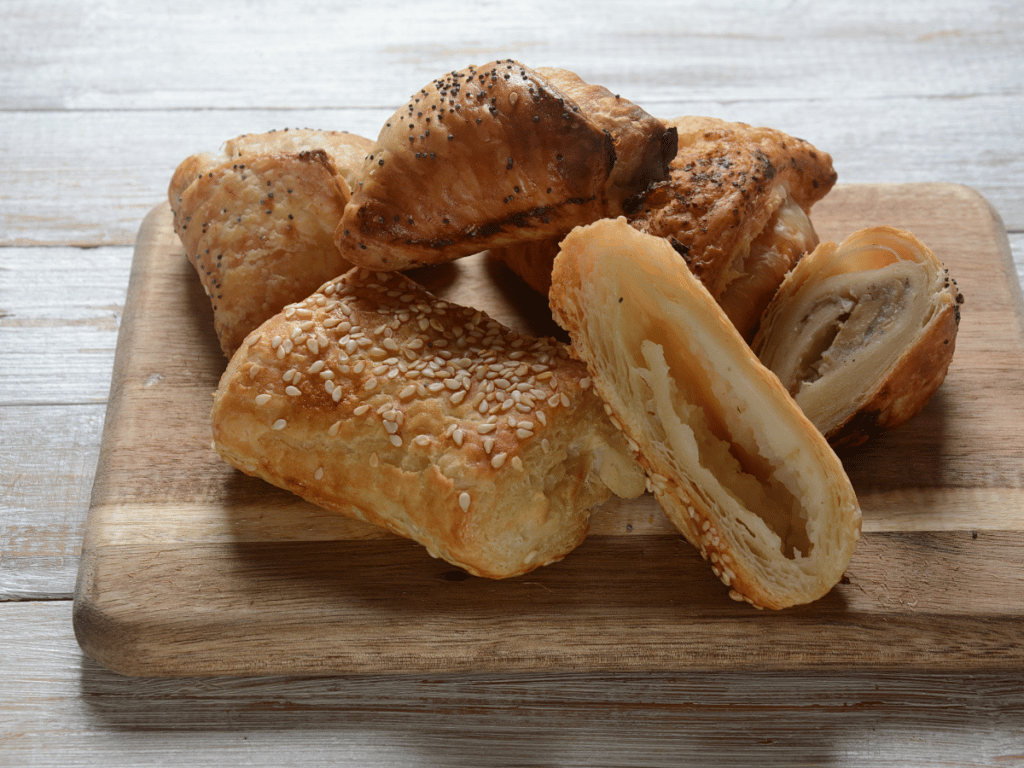
Bourekas are a favorite among Sephardi communities and throughout Israel.
Originally from Turkey, the word “boureka” comes from the Turkish word boerek which means pie. Sephardic Jews serve them on Shabbat, holidays and other celebratory occasions. According to “The Book of Jewish Food” by Claudia Roden, Iberian Jews included bourekas as part of their Shabbat meals as early as the 16th century.
Cheese is a classic boureka filling, which is why many Sephardim traditionally serve them on Shavuot.
Kadeh
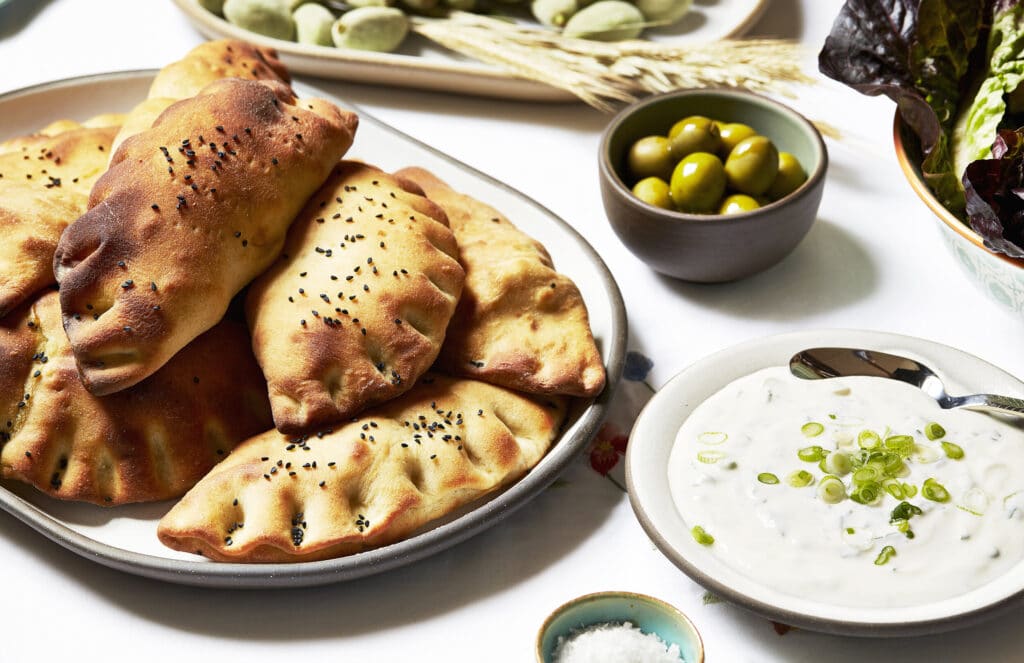
Kadeh is a Kurdish bread stuffed with cheese and spinach. Kurdish Jews serve Kadeh on Shavuot to honor the tradition of eating dairy, often served alongside a rich yogurt sauce called zizik. (How to make Kadeh and a brief history of the food.)
Atayef
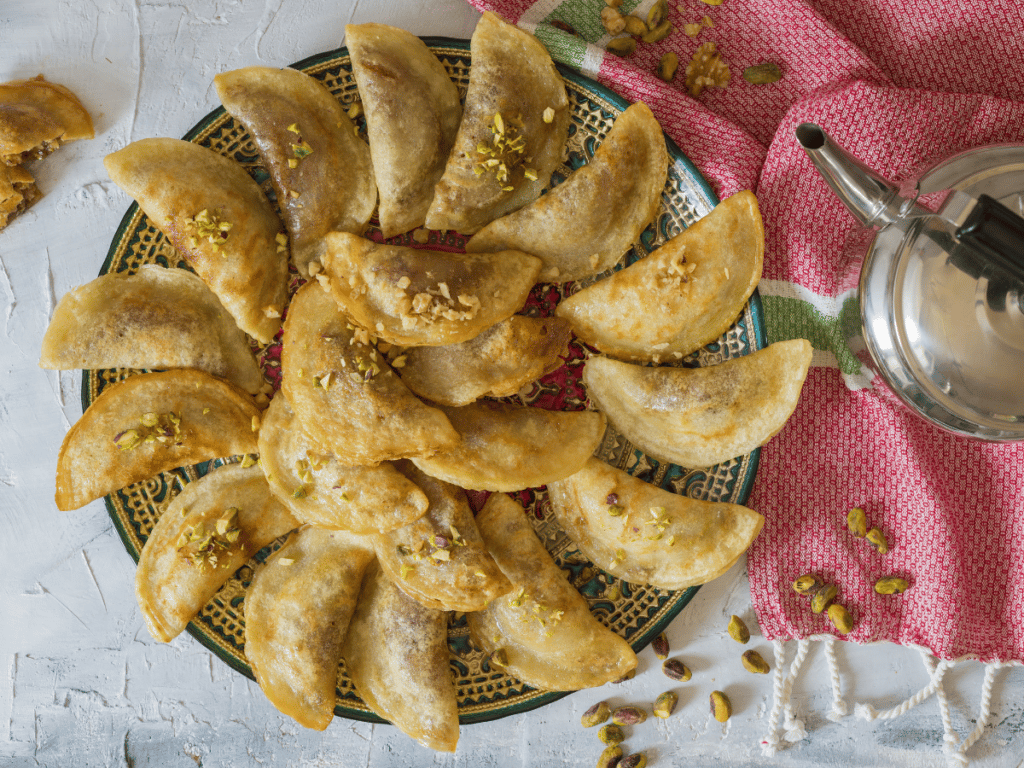
Syrian Jews eat a cheese-filled pancake called Atayef – a Syrian delicacy beloved by Jews and non-Jews for hundreds of years. The pancakes are stuffed with a ricotta mixture and coated in rosewater syrup.
Originally Published Jun 2, 2022 04:19PM EDT
